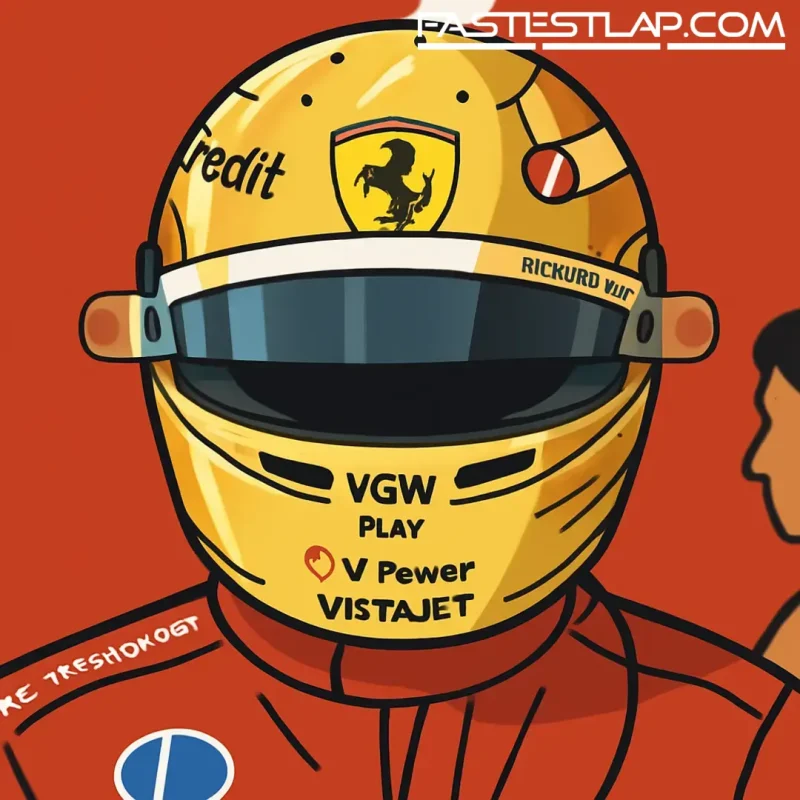Alonso fumes, Hamilton limps, and the FIA sticks to its guns: why Singapore’s late drama stayed a five-second story
Under the Marina Bay lights, Lewis Hamilton’s Ferrari was holding together by grit and brake dust. Two laps from home, the seven-time champion came on the radio sounding as rattled as you’ll ever hear him: “Losing my brakes, mate.” Behind, Fernando Alonso’s Aston Martin was looming and, to the Spaniard’s eye, the red car ahead was both erratic and unsafe.
Hamilton cut corners to survive. Alonso erupted over the radio. The stewards stepped in. And yet, for all the needle, the FIA’s response was measured: a five-second time penalty for leaving the track and gaining an advantage, dropping Hamilton behind Alonso in the classification. No black-and-orange flag. No order to park it.
Alonso’s post-race question — “Is it safe to drive with no brakes?” — is fair. The referee’s answer is buried in the rulebook and a season’s worth of precedent.
Hamilton floated “force majeure” over the radio in the heat of battle, hoping the situation might count as an exception. The stewards didn’t bite. The current Driving Standards Guidelines are explicit about when a driver can leave the track without sanction. In plain English, you’re covered if you’ve had an obvious loss of control, you’re avoiding a collision, you’ve been forced off, or you’re already being penalised for something else in that same incident. Fading brakes don’t sit neatly in those baskets — and Hamilton was judged to have gained by cutting the circuit, hence the five seconds.
So why didn’t the FIA go further and flag the Ferrari as unsafe? That lives under Article 26.10 of the Sporting Regulations, which deals with cars in a “possibly unsafe condition.” It gives the race director the discretion to intervene if a car has significant, obvious structural damage or a failure that presents an “immediate risk” and means it can’t reasonably get back to the pits without hindering others. In those cases, the black-and-orange flag comes out: fix it or retire it.
Two things matter here. First, brake fade or a failing disc, while terrifying for the driver, isn’t like a front wing endplate hanging by a thread. One is an internal performance and control issue, the other is a potential projectile waiting to grenade into someone else’s path. The FIA typically jumps when parts can detach and endanger others; it’s more reluctant when the risk is largely contained to the driver wrestling the problem.
Second, precedent. Earlier this season in China, Lando Norris completed the final laps nursing a serious brake issue, later calling it “scary” and his “worst nightmare.” George Russell was hunting him down at the time. No intervention then either. You don’t have to love that logic — consistency isn’t the same as perfection — but it’s the line the FIA has drawn: internal failures that don’t threaten to shed debris generally don’t trigger the black-and-orange unless the car becomes an obvious hazard.
Alonso, for his part, had every right to question what he was seeing. From the cockpit, a rival skipping corners at the end of a grand prix and calling “no brakes” over the radio looks like chaos. But radio language is also its own theatre. “No brakes” often means a long pedal, massive fade, or the bias wound into a corner of the car to keep it alive — not necessarily a total absence of stopping power. Drivers also talk big in the moment to force the issue with race control. It’s part of the game.
Could Hamilton argue he’d suffered an “obvious loss of control” and thus shouldn’t be pinged for leaving the circuit? Maybe, but that exemption is generally used for snaps, spins and genuine moments where you’re a passenger, not for repeatedly opening the steering to cut corners as a defensive measure. The stewards applied the letter and the spirit here. He left the track, he gained, he was penalised. Simple — if not painless.
The broader safety question lingers, and it’s the only part of Alonso’s gripe that really sticks. Should there be a clearer threshold for brake issues late in races? It wouldn’t hurt. The current framework relies heavily on the race director reading the situation as it unfolds and weighing visible danger to others. That’s fine 95% of the time; the other 5% looks messy because brake problems can turn catastrophic very quickly. You could easily imagine a guidance note that says: if a driver declares a critical brake problem and immediately leaves the track multiple times, get them to the pits. Not as punishment, but as protection.
On Sunday night, though, the call matched the handbook. Hamilton copped the five seconds and slipped behind Alonso in the final order. No further action, no new controversy added to a championship that’s already stacked with narratives.
There was frustration, sure — Alonso’s radio left little to the imagination, Hamilton later needled him back — but no foul play. Just one champion fighting physics, another losing patience, and the FIA threading the needle it has threaded all season.




